Newsletters are among the most powerful digital marketing tools to build engagement as they allow you to connect with your prospects directly in their inboxes.
As such, there are a few things you need to optimize in your newsletters to get optimal results: your subject line, newsletter introduction, and call-to-action buttons.
These critical elements encourage your audience to open, read, and take your desired actions.
This post shares tips along with some real-life newsletter introduction examples for your inspiration.
We’ll also share expert insights on making the best use of AI to help you save time and achieve successful email campaign results.
Let’s get started.
Six email newsletter introduction tips
Here are some of the top six tips to consider when writing an email newsletter introduction.
1. Avoid fluff in the email newsletter header
You’ll need to avoid overwhelming your audience with too much information simultaneously. You want to focus on what’s most relevant, lest you lose your readers and they don’t get to the end of your email.
This isn’t to say that you shouldn’t keep your email newsletter interesting. You can still remain conversational and use humor or light language.
Just be sure to highlight what’s most important to your customers right from the beginning. Then, follow that with a brief explanation and a call to action. To yield the best results, put your CTA above the fold.
Take this Canopy email, for instance. The introduction is brief and catchy and ends in a CTA. The entire email is generally short, too.
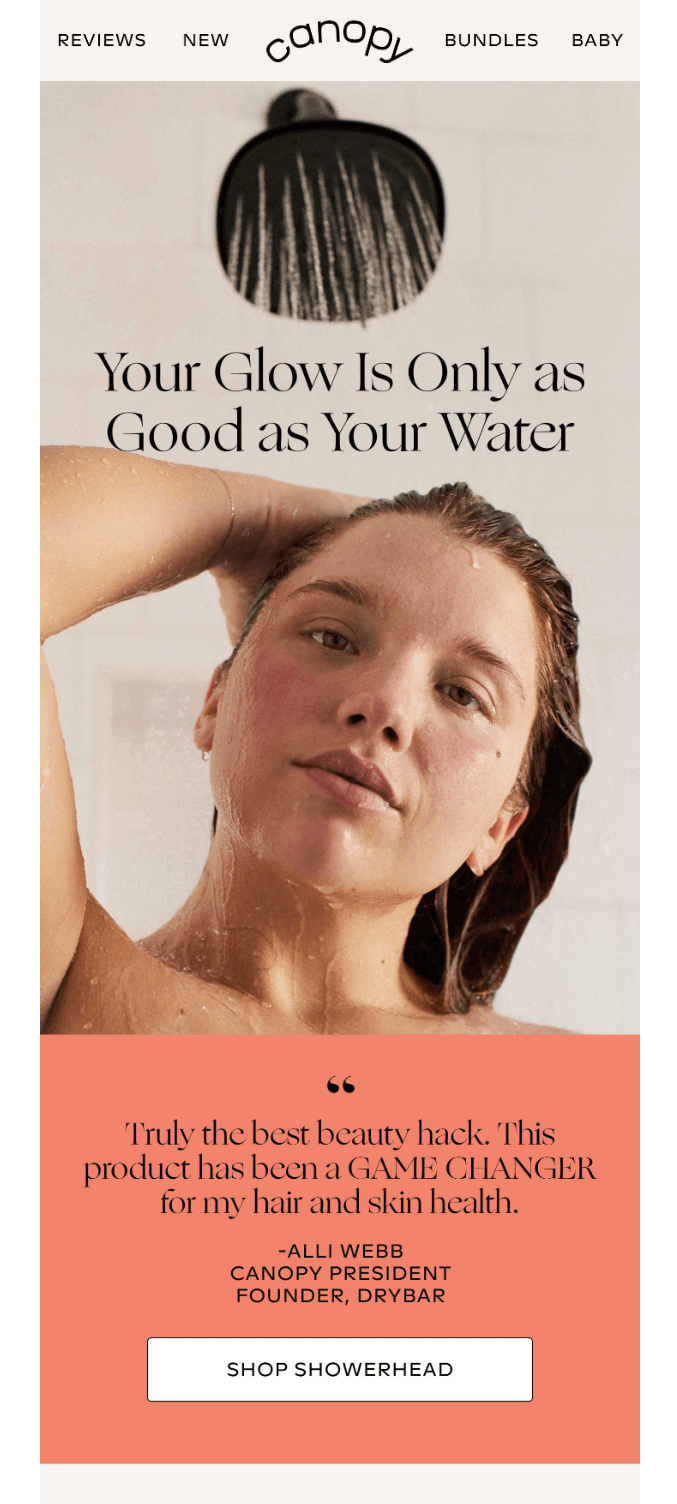 Image via Really Good Emails
Image via Really Good Emails
2. Start with what’s most interesting
While it may be tempting to have the juicy parts of your newsletter in your email body or towards the end, including them in your introduction can be more effective.
This way, your readers won’t have to go through long unnecessary details before getting to the juicy bits, and you’ll keep them engaged.
Here’s an example from Bored Cow:
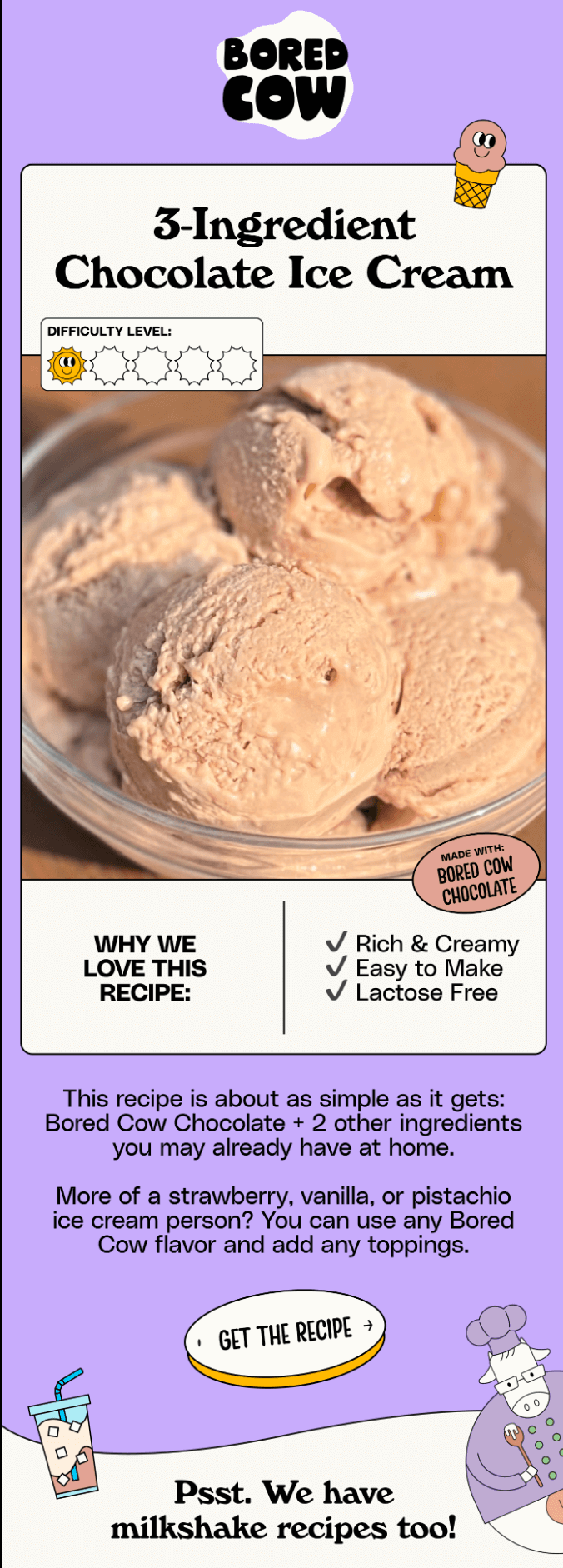 Image via Really Good Emails
Image via Really Good Emails
Here, in just a few words, the introduction manages to create interest in the reader’s mind.
3. Begin with a question
Starting your email newsletter with a question in the header is one way to intrigue your readers and get them curious. You want to include an open question, in a way that allows you to respond to it in the body of your email.
Here’s an example of how you can do that.
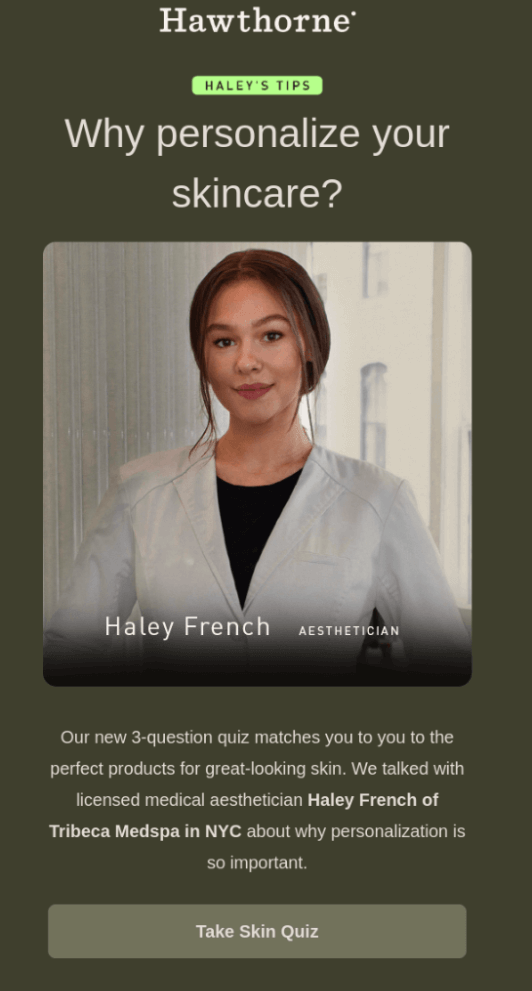 Image via Really Good Emails
Image via Really Good Emails
From the above example, the sender begins the email with a question that skincare users would find important. With skincare products, what works for one user may go as far as causing damage to another user, so personalization is crucial.
The email gets into the details of that, offering to help each user find a product specific to their skincare needs.
The introduction is brief and is followed by a call to action to take a quiz which also helps to build engagement with your customers and increase their involvement.
Another good example with a question is from ThirdLove. The email is very brief and straight to the point for many women. Next to the question, the big and bright call-to-action button is located.
 Source: ThirdLove
Source: ThirdLove
4. Personalize your introduction
Making your introductions personal is among the most effective ways to make readers feel recognized. One way to do that would be to refer your customers by their names in your introduction.
Or, you could share a personal story that your readers can relate to, so you can start by building a relationship with them. This, however, requires that you know your audience well, so you’re not sharing irrelevant stories.
 Source: Mountainner Brand
Source: Mountainner Brand
5. Add visuals to your email newsletter header
Adding a powerful visual to your introduction makes it more engaging and helps make the message more straightforward. This could be an image with people, a GIF with the changing offer, etc.
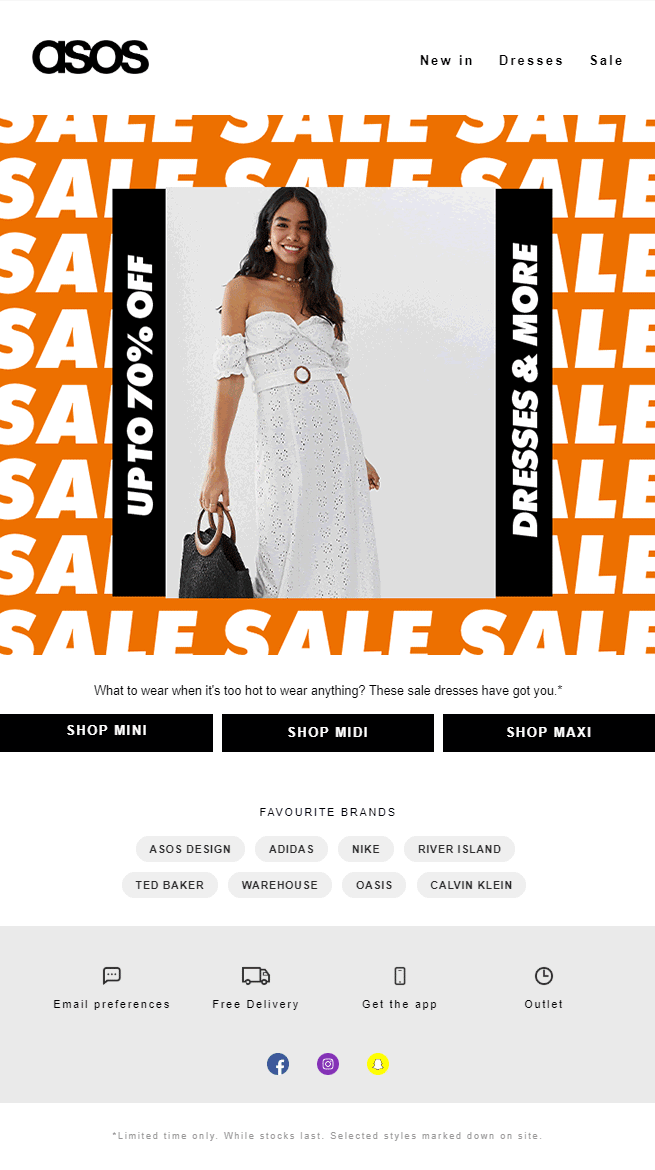 Source: Asos.com
Source: Asos.com
The good thing about adding visuals is that you can do so for just about any email newsletter. Promotions, thank you notes, product launches, and more. Keep in mind that your images need to be in line with your brand colors and style.
Blinking GIFs “Buy more, Save more”, “SALE,” and similar visuals can work for promotional sale campaigns.
For brand story-telling emails, the photo of the founder or story heroes will fit perfectly, just like in the Mountaineer Brand email example or the Canyon Coffee email below.
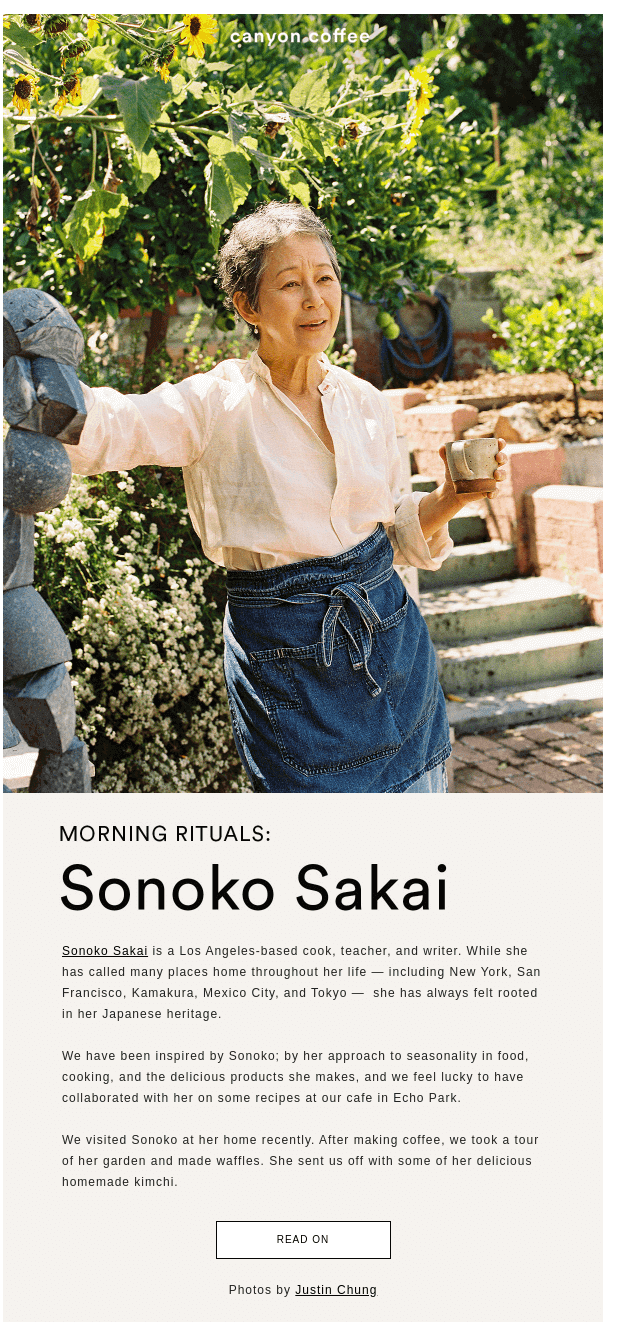 Source: Canyon coffee
Source: Canyon coffee
6. Use a one-liner introduction
Though these may seem brief, fitting every important detail in a single line could make for a great introduction. One-liners can be very efficient.
For one, since they’re brief, it makes it easy to follow up with a visual.
You can also use a single one-liner consistently as a way to remind your readers about your brand or the purpose of your newsletters.
Over 80% of industry experts send email newsletters as part of their marketing strategy. Going by this statistic, your readers are probably receiving emails from other brands, and they could get mixed up as to who sent what and why.
With a consistent one-liner introduction for each of your newsletters, you can constantly remind them why they subscribed to your newsletter in the first place.
Five catchy email newsletter introduction examples
In this section, we’ll list a few newsletter opening message examples to inspire you even more.
Let’s get into it.
1. Ace Hotel Events Newsletter
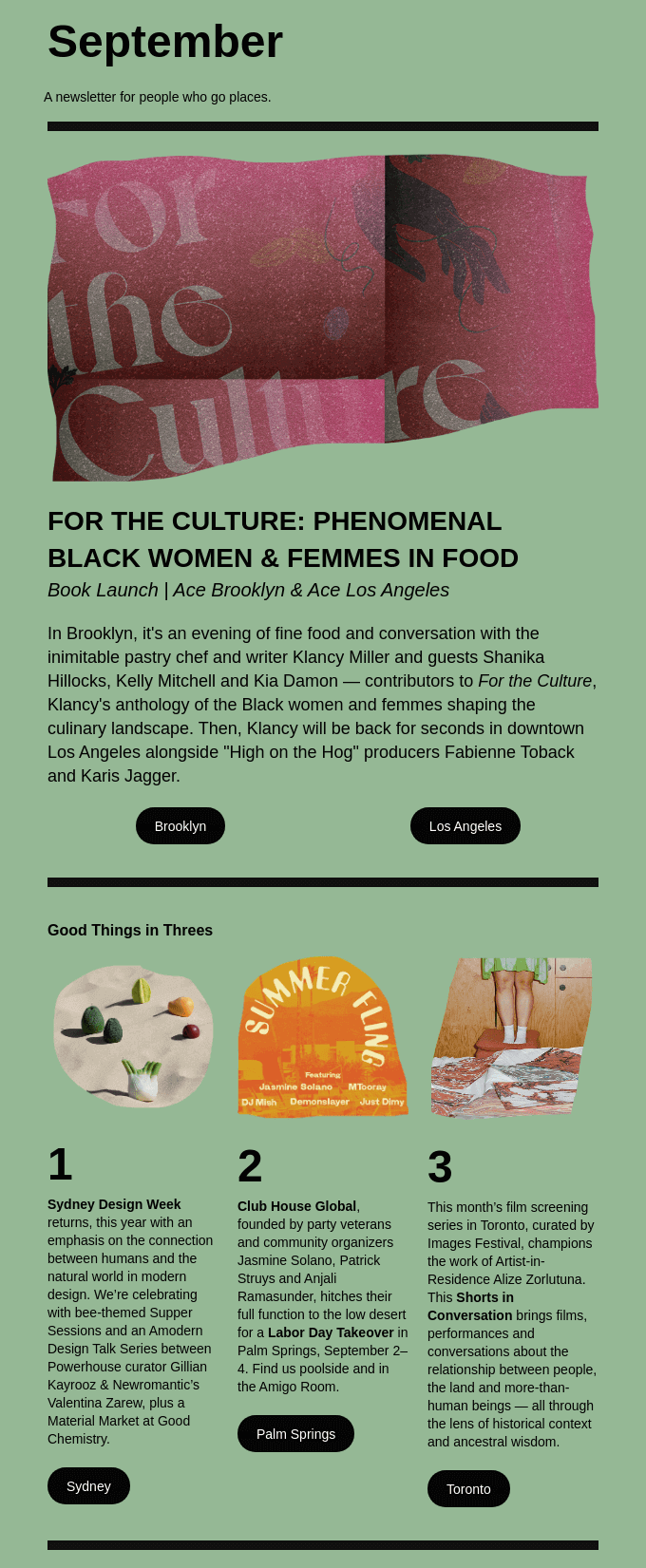 Image via Really Good Emails
Image via Really Good Emails
This Ace Hotel email is meant to announce a series of events held at different locations on set dates.
Ace Hotel starts its email newsletter with a catchy one-liner, followed by an image that hints at what the newsletter is all about.
The email then talks about the events and who they’re meant for. We found it impressive how the email includes every exciting bit of the event from the word “go.”
For instance, you learn what will happen in Brooklyn, all the exciting speakers to expect, the food, and more.
The email manages to announce several events happening in different locations, all in one newsletter, without seeming too chunky. We also found it interesting that the email is visually dense and, overall, vibrant.
2. Haus’s seasonal promotions
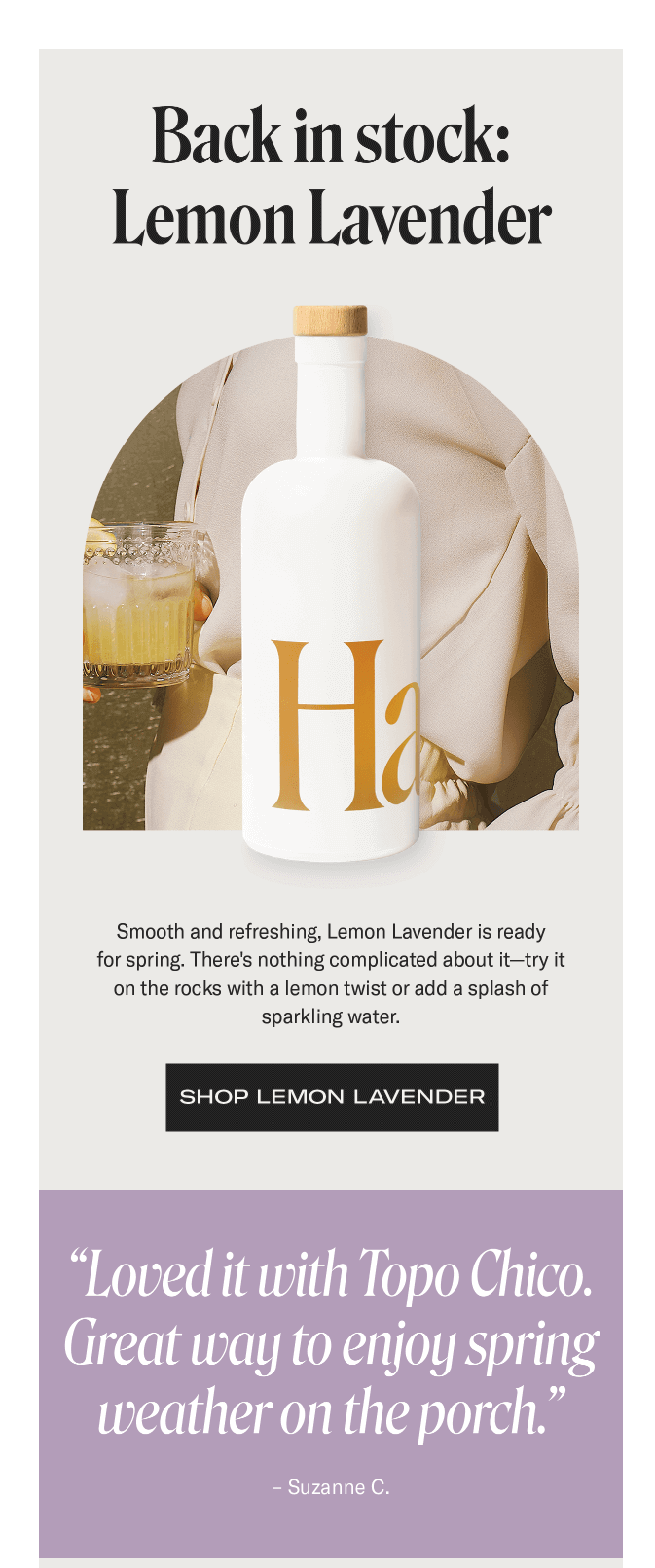 Image via Really Good Emails
Image via Really Good Emails
Haus does a great job of promoting their Lemon Lavender drink in the above email newsletter introduction. It also has the chance to attract attention with its best-seller.
The introduction starts with a brief and direct statement so the audience knows the product is back in stock. This is a great way to summarize the whole point of the email in a one-liner sentence.
The intro is then followed by fine imagery of the drink in a bottle and a clear glass. The color coding is simple and attractive. After the imagery, there’s a brief explanation of how you can enjoy the drink in spring.
This email introduction example keeps things simple without losing its edge. Though concise, it’s still very interesting to read and provides all the information the reader needs.
3. Butter’s engagement newsletter
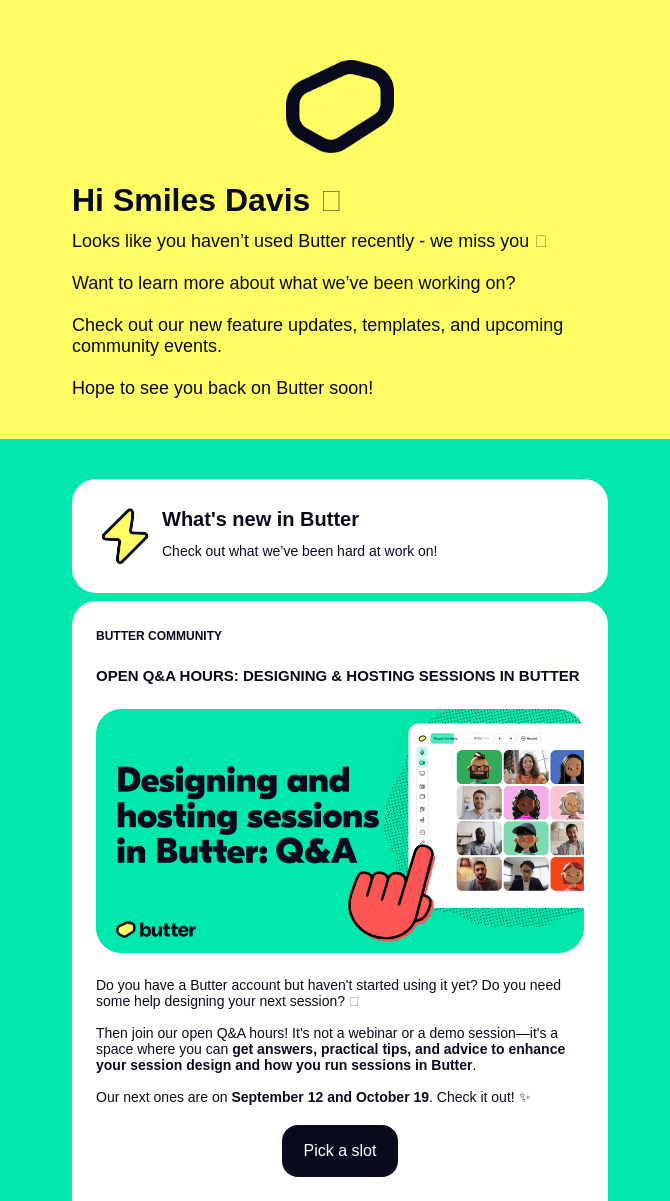 Image via Really Good Emails
Image via Really Good Emails
This is an example of how to use personalization in an email newsletter introduction. This email example uses the recipient’s names to address them and takes note of their inactivity in a friendly, conversational tone.
It’s one way to reach out to inactive users and build engagement.
The email then goes ahead and updates the reader about some new features, templates, and upcoming events that may be of interest to them.
Overall, the introduction is colorful and uses a conversational tone, encouraging engagement.
4. Hedley and Bennet’s Essential Apron
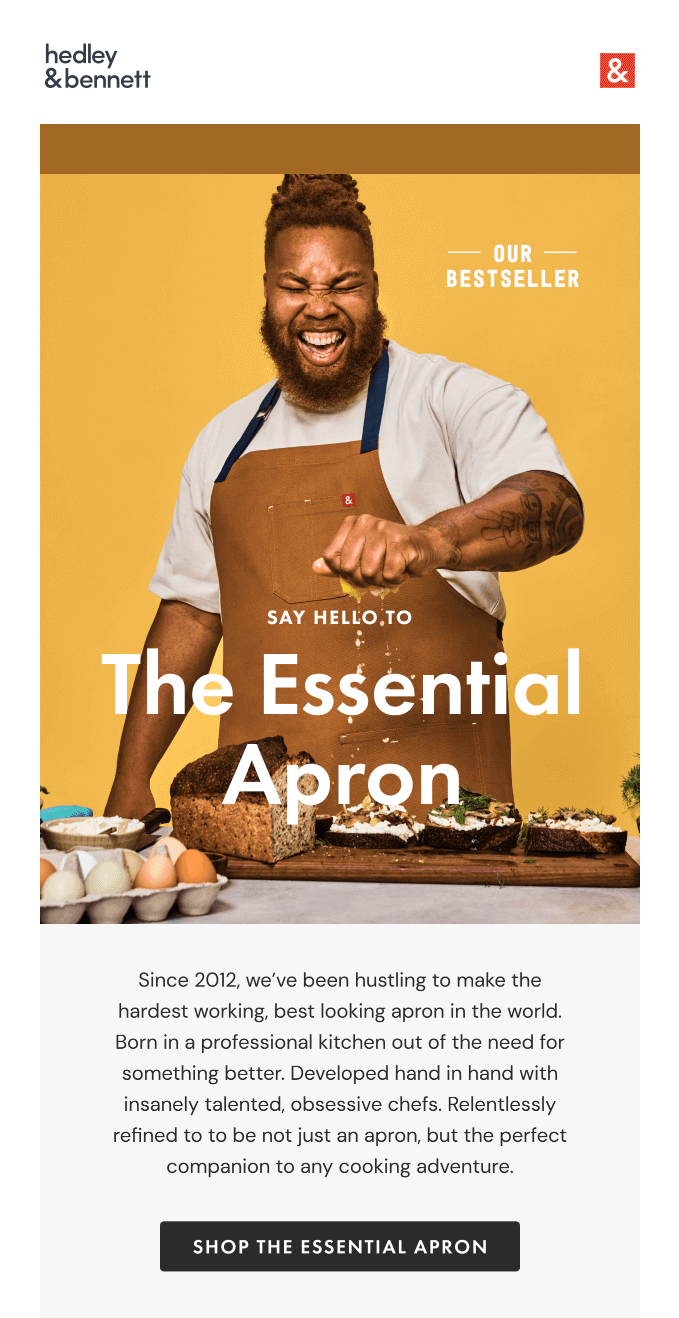 Image via Really Good Emails
Image via Really Good Emails
Everybody loves a good story, like the one depicted here in this Hedley and Bennet newsletter introduction. A handy apron built by chefs for chefs sounds like an item anyone who loves cooking would want to buy.
This is part of what makes the newsletter introduction catchy. That and the fact that it starts with an image of the product being worn by a user.
The color coding is also vibrant, and the colors blend seamlessly into an aesthetically pleasing newsletter.
We found it impressive how the focus is on the product’s benefits to the user.
Instead of using your regular bullet points, Hedley and Bennet brand lists these benefits uniquely alongside an image of the product. This helps keep the email minimalistic while at the same time adding an engaging visual.
5. Bike Components
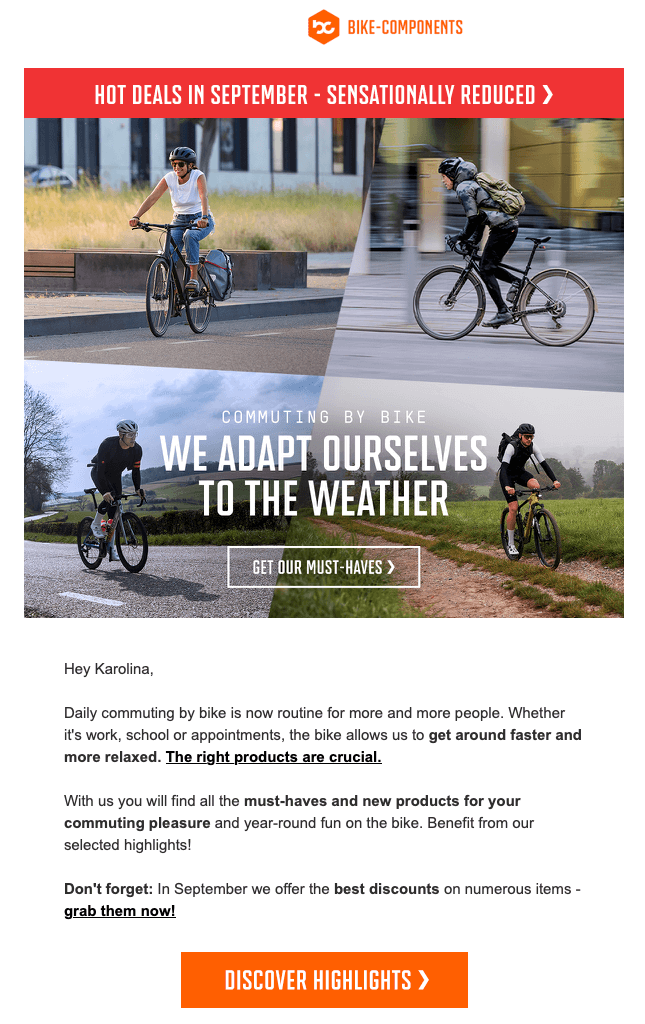 Source: Bike Components
Source: Bike Components
The Bike Components brand employs various tactics in its campaign, but email personalization is the most crucial.
The primary message in the email aligns with the seasonal changes in the subscriber’s region. Additionally, the email includes the subscriber’s name.
Furthermore, this campaign effectively combines the sale of the previous collection while emphasizing the importance of new must-have accessories for the upcoming cold season.
Recent research has indicated that personalization ranks among the most effective email marketing strategies alongside automation and segmentation. Bike Components has executed it exceptionally well.
AI-generated newsletter intro
Having trouble coming up with newsletter introductions?
With artificial intelligence, and particularly ChatGPT, you’re just a prompt away from a killer newsletter introduction.
AI makes the brainstorming process quick and easy, saving marketers the time and effort that would have otherwise been spent searching for inspiration.
Here are some ways to prompt ChatGPT so you can get the best AI-generated newsletter intro ideas.
- Be specific: The more specific your prompt is, the more detailed and useful the results will be. With introductions, make sure you mention the purpose of your campaign, your target audience, products, number of words, etc.
- Use examples: To give your AI a little more direction as to how you want your email introductions to sound. You can quote an example from a past campaign or a competitor’s newsletter.
- State your goal: What do you want to achieve with your newsletter introduction? Whether it’s to humor your readers, engage them, or encourage them to make a purchase, you’ll need to tell ChatGPT your specific goal with each introduction.
Overall, ChatGPT can be crucial in helping you generate fresh ideas for your email newsletter introductions. All you need are the right prompts and you can brainstorm just about anything with this AI tool.
Email tools that offer AI-generated campaigns
Other than ChatGPT, some top email marketing software solutions are also joining the AI bandwagon.
For instance, some platforms provide AI-generated subject lines, while others use AI to help users generate high-performing preheader texts or email content.
Here are some email marketing software solutions that offer AI-generated campaigns.
- Omnisend: This platform provides a free AI subject line generator as well as an AI-generated email campaign. All you have to do is to write a few keywords and the goal for your campaign. This feature is quite impressive.
- GetResponse: Here, you’ll get both a subject line and an email content generator, which help keep your creative juices flowing at all times. The solutions are powered by GPT-3 technology from OpenAI, making it familiar if you’ve used ChatGPT before.
- Klaviyo: Klaviyo boasts of being an AI-powered marketing company with machine learning capabilities embedded into its features. Some of these include predictive analytics, an AI-powered SMS assistant, a subject line generator, and personalized product feeds.
Coming up with fresh email content regularly can be daunting, especially since it requires lots of creativity. However, with such platforms and features, you get to eliminate the hassle.
Email newsletter header: Wrap up
Creating a newsletter email intro has always been challenging. You should be well on your way with the tips on how to start a newsletter examples.
Remember:
- Avoid fluff
- Start with the most interesting
- Intrigue
- Personalize
- Add visuals
Empoying these main principles, you will create catchy email intro that leads to further reading and engaging with the email.
FAQs
The newsletter introduction is important for several reasons:
- A compelling introduction grabs attention and encourages recipients to carry on reading
- It sets expectations and the tone for the entire newsletter
- A well-crafted introduction can pique curiosity and generate interest in the content that follows
Overall, the newsletter introduction serves as a gateway to your content, influencing whether readers stay engaged or move on.
These are my few tips to follow:
- State your name and role right away. If your role consists of many words, pick the most important things to mention.
- Highlight the value of your newsletters and being a part of your community.
- Encourage readers to connect and interact with your content.
- Keep if brief.
Shortly: personalization, clarity, brevity, value proposition, proper tone, and call-to-action at the end.
